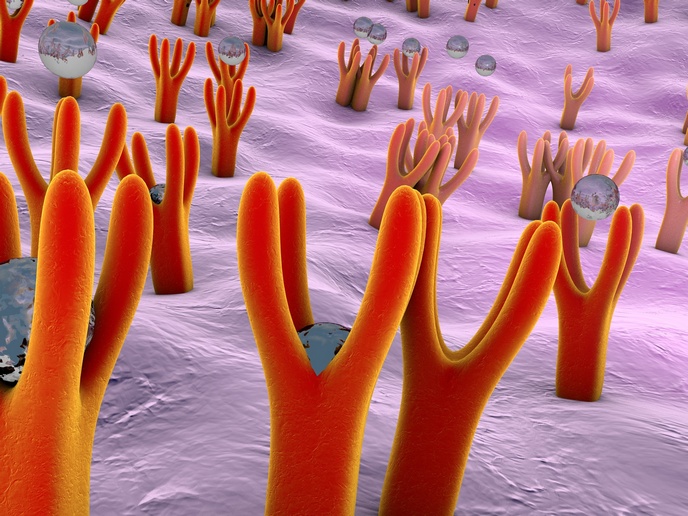The first oral insulin for the treatment of Type 2 diabetes
Nearly 10 % of the world’s population suffer from diabetes(opens in new window) with the majority having Type 2, which accounts for around 90 %(opens in new window). People with diabetes are at a higher risk of many secondary diseases, including cardiovascular diseases and COVID-19. Initial treatment usually involves changes to diet and exercise alongside oral medications, such as metformin(opens in new window). If this and other treatments don’t work, insulin injections are usually recommended to compensate for the pancreas’s inability to create sufficient insulin. Yet, insulin injections suffer from poor patient compliance because of the perceived stigma of an injectable therapy, compounded by safety concerns related to insulin toxicity, weight gain and hypoglycaemia(opens in new window) (which can lead to death). For this reason, despite the well-documented benefits of early insulin usage, most doctors and patients use it as a last resort. Oramed(opens in new window), through the EU-supported Oralis project, set out to develop a drug which could get insulin into the body through the liver, rather than directly into the blood stream. The team has already conducted clinical trials where their candidate drug, ORMD-0801, has not only proven to be safe and well tolerated, but also been shown to lower HbA1c levels(opens in new window) (a key indicator in diabetes management), as well as fasting blood glucose, without weight gain. “It was very exciting when we first saw our proof of concept proven to be efficacious and safe. We then more fully appreciated the potential to help millions of people looking for a better way to live with the disease,” says Miriam Kidron, chief scientific officer of Oramed.
Breakthrough technology
Oramed has been working for many years to discover a way to convert injectable medications into oral treatments, culminating in a breakthrough technology. This protects the peptide as it enters the gastrointestinal tract(opens in new window) with a special coating, while pharmacology(opens in new window) (protease inhibitors) stop protein-degrading gut enzymes from damaging the drug. Additionally, absorption enhancers help the peptides cross the small intestine wall. To date, Oramed has conducted a number of clinical trials of its drug candidate, ORMD-0801. The most recent and largest was a 90-day treatment Phase 2 trial under the Food and Drug Administration(opens in new window) (FDA) in the United States, involving over 300 participants. This trial showed the drug brought about a statistically significant reduction in HbA1c levels, while being safe and well tolerated. ORMD-0801 has so far been dosed over 7 000 times in more than 700 people. “Amazingly, we discovered that taking our oral insulin just once a day at night before bedtime had a statistically meaningful effect on lowering blood glucose over a full 24 hours,” adds Kidron.
The go-to therapy
In Europe alone, over 6 % of the adult population(opens in new window) has diabetes and this number is growing every year. With early treatment shown to have long-term benefits for the health of people with diabetes, oral insulin could be a game changer. “This could become the go-to therapy for Type 2 diabetes, especially as an early-stage option. We feel that right now we are close to the pinnacle of something truly revolutionary!” notes Kidron. The team hopes to begin Phase 3 trials under the FDA and European Medicines Agency(opens in new window) (EMA) in the near future. In parallel, partners in China are also proceeding to Phase 3 trials.







